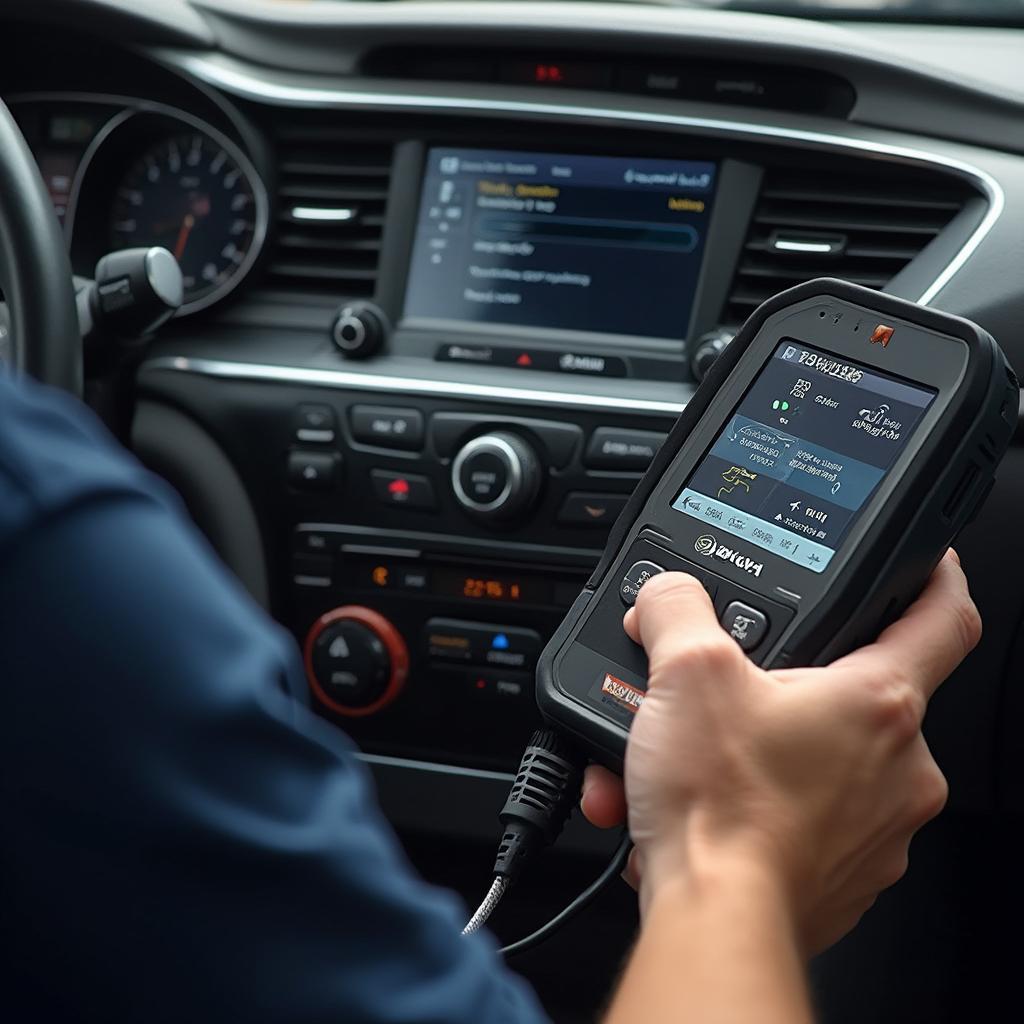Your cart is currently empty!

How to Upgrade OBD1 to OBD2: A Comprehensive Guide
Upgrading from OBD1 to OBD2 can seem daunting, but it’s a worthwhile endeavor for enhanced diagnostics and control over your vehicle’s emissions. This guide will provide you with a thorough understanding of the OBD1 to OBD2 conversion process, explaining why you might consider it, the challenges involved, and a step-by-step guide to help you navigate the upgrade.
Why Upgrade to OBD2?
OBD2 (On-Board Diagnostics II) offers significant advantages over its predecessor, OBD1. OBD2 is a standardized system, meaning that regardless of the vehicle make or model, the diagnostic connector, codes, and protocols are the same. This universality makes troubleshooting much easier. Moreover, OBD2 provides more comprehensive diagnostic information, allowing you to pinpoint issues more accurately. Another key benefit is the ability to monitor and control emissions more effectively, contributing to a cleaner environment. You can learn more about converting a specific vehicle model, such as a 1994 Honda Civic, at 1994 honda civic obd2 conversion.
Understanding the Challenges of OBD1 to OBD2 Conversion
While upgrading to OBD2 offers numerous advantages, it’s crucial to be aware of the potential challenges. Converting from OBD1 to OBD2 isn’t a simple plug-and-play process. It often requires significant modifications to the vehicle’s wiring harness and computer system. The complexity of the conversion varies depending on the vehicle’s make, model, and year. Some conversions might involve replacing the entire engine control unit (ECU), while others may require adapting the existing ECU. The cost of the conversion can also be a factor, depending on the parts and labor required. For more information on whether an upgrade is even possible for your specific vehicle, check out can you upgrade obd1 to obd2.
Is it possible to upgrade any OBD1 car?
Not all OBD1 cars can be easily upgraded. The feasibility of the conversion depends heavily on the specific make and model. Some vehicles have readily available conversion kits and resources, while others require extensive custom work.
Step-by-Step Guide to Upgrading from OBD1 to OBD2
- Research: Thoroughly research your vehicle’s make, model, and year to determine the specific requirements and challenges of the conversion. You might find valuable resources and guides online or in automotive forums.
- Gather the Necessary Parts: This may include a new ECU, wiring harness adapter, oxygen sensors, and other components.
- Disconnect the Battery: Always disconnect the negative battery terminal before working on the vehicle’s electrical system.
- Remove the OBD1 System: Carefully remove the existing OBD1 ECU and wiring harness.
- Install the OBD2 System: Install the new OBD2 ECU, wiring harness adapter, and other components. Ensure all connections are secure and properly routed.
- Reconnect the Battery: Reconnect the negative battery terminal after all components are installed.
- Test the System: Use an open port obd2 scanner to check for any diagnostic trouble codes (DTCs) and ensure the system is functioning correctly.
How much does an OBD2 conversion cost?
The cost can range from a few hundred dollars for a simple conversion kit to several thousand dollars for more complex conversions requiring professional installation.
“A successful OBD1 to OBD2 conversion hinges on thorough research and meticulous execution,” says renowned automotive electronics expert, Dr. Emily Carter. “Understanding the nuances of your specific vehicle’s electrical system is paramount to achieving optimal results.”
 Using an OBD2 Scanner(https://obdfree.com/innova-obd2-scan-tool-3140/).]
Using an OBD2 Scanner(https://obdfree.com/innova-obd2-scan-tool-3140/).]
Conclusion
Upgrading from OBD1 to OBD2 can be a complex undertaking, but the benefits of improved diagnostics, emissions control, and access to a wider range of diagnostic tools make it a worthwhile investment. By following this guide and conducting thorough research, you can successfully navigate the How To Upgrade Obd1 To Obd2 process and enjoy the advantages of a modern diagnostic system. See more about converting a Civic at how to convert obd1 to obd2 civic.
“Embracing the OBD2 standard unlocks a wealth of diagnostic capabilities and empowers car owners with greater control over their vehicle’s performance and environmental impact,” adds Dr. Carter. “The initial investment in the conversion is often offset by the long-term benefits of improved maintenance and reduced emissions.”
FAQ
- Is it legal to convert from OBD1 to OBD2? Yes, in most cases it is legal, but it’s crucial to ensure the conversion meets local emissions regulations.
- Can I do the conversion myself? If you have advanced automotive electrical skills, you might be able to do it yourself, but professional installation is often recommended.
- What tools do I need for the conversion? Basic hand tools, wiring diagrams, and an OBD2 scanner are essential.
- Will the conversion affect my car’s performance? A properly executed conversion should not negatively impact performance.
- Where can I find OBD2 conversion kits? Conversion kits are available from various online retailers and automotive parts stores.
- How can I ensure the conversion meets emissions regulations? Consult with a qualified mechanic or emissions testing facility.
- What should I do if I encounter problems after the conversion? Consult a qualified mechanic or contact the manufacturer of the conversion kit.
Need help with your OBD2 conversion? Contact us via WhatsApp: +1(641)206-8880, Email: [email protected] or visit us at 789 Elm Street, San Francisco, CA 94102, USA. Our 24/7 customer support team is ready to assist you.

Leave a Reply